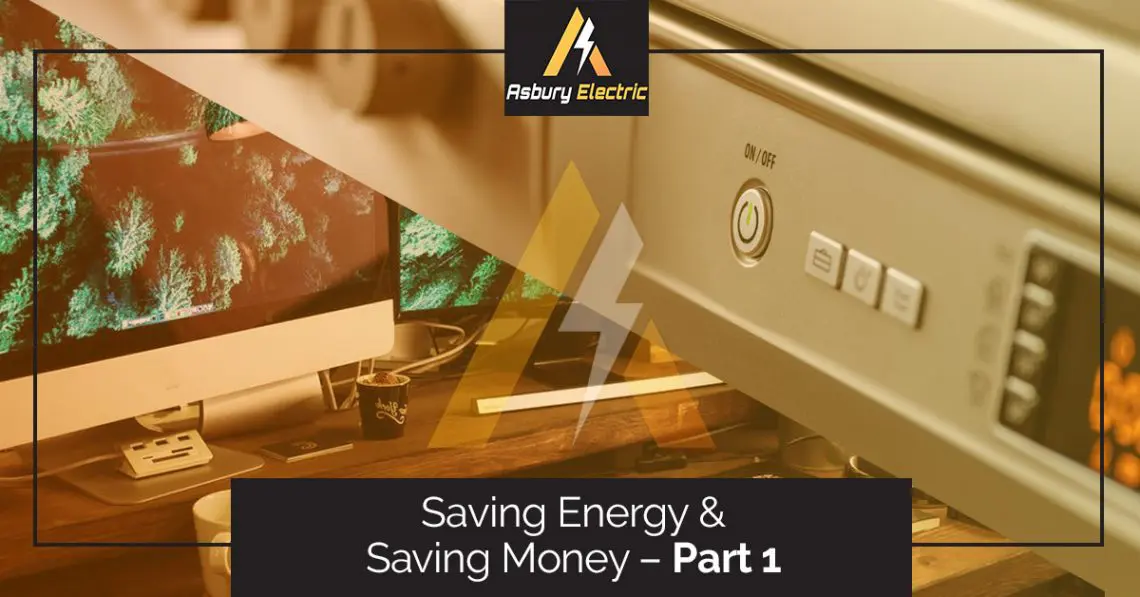Our team at Asbury Electric is made up of professional, experienced electricians, and they are a little compulsive when it comes to saving energy. They’ve even been known, out of habit, to turn out the lights when they are leaving the conference room, forgetting that there are still people working in there.
We’ve compiled some of their best energy-saving tips for you here. This is part one in an ongoing series about saving energy. Over the course of this two-part series, we’re going to cover the following topics.
- Estimating Energy Use
- Vampire Loads
- Lighting
- Computers and electronics
- Kitchen appliances
- Passive solar
- Weatherizing
If some of these sound like good ideas, and you’d like some help figuring out where you can get the most energy-savings bang for your buck, give us a call. We’ve been part of your Gloucester community for a long time, and we’re happy to be of service.
Estimating Energy Use
Your major appliances should all have an energy-guide label on them. It will give you a rough idea of how much energy they are using when they are functioning at full capacity.
Speaking of energy use, please remember that regular maintenance is the only way to keep your appliances at peak performance and to make sure they aren’t sucking up more energy than they need.
Using an Electric usage monitor is also a good way to get a handle on how much energy you are using in the office, in the laundry room, and in the kitchen. You can typically find them at your hardware store for under $50.
To get started, check out the handy appliance energy calculator on the Department of Energy website. It just provides an estimate, but that might be enough motivation to get you started on a new home energy-saving mission.
Vampire Loads
Believe it or not, vampire load is actually a technical term. It refers to electronics that are plugged in, turned off, but still drawing a small load of electricity. Electricity is essential leaking or dripping into these appliances, even though you’ve turned them off. And, you may be surprised by how many of these appliances you have in your home.
Before you panic, we aren’t suggesting that you go so far as to unplug your cordless phone charger when you leave the house. We understand that in the world we live in, it is virtually impossible to eliminate all energy leakage. Here are some good places to start.
Unplug the following appliances when they aren’t in use.
- Hairdryer
- Curling Iron
- Coffee Pot
- Toaster Oven
- Microwave
- DVR
- Computers
- Computer monitors
- Printers
- Space heaters
- Power tool chargers.
Now you’ve got a pretty good idea about how to find out where your electricity is actually going, and how to stop energy from leaking out through plugged-in appliances. In the next article in our series, we’ll start taking a look at computers, and home electronics.
Meanwhile, if you’ve been inspired to give your electronics a little TLC, and you are in the Gloucester area, give us a call. We’ll come out, inspect your appliances, and take care of any maintenance that is needed.


